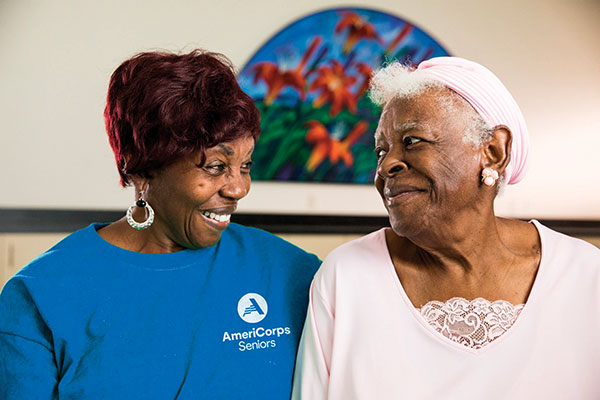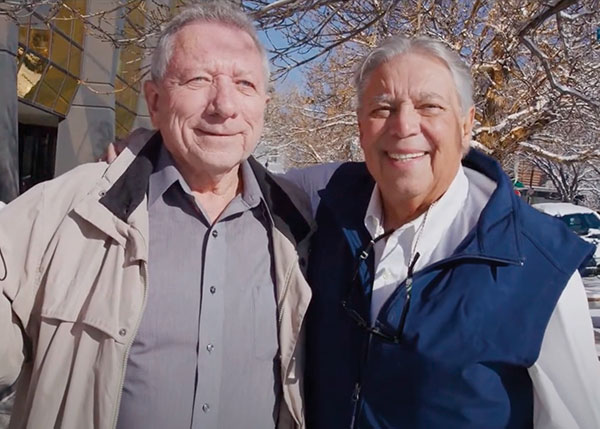HEALTHY LIVING
Prepare for healthy pregnancy

5 behaviors to help reduce the risk of birth defects
(Family Features) If you are thinking about becoming pregnant, now is a perfect time to make a plan. There are steps you can take to increase your chances of having a healthy, full-term pregnancy and baby – and part of that includes learning about birth defects. Understanding birth defects across the lifespan can help those affected have the information they need to seek proper care.
Each year, birth defects affect about 1 in 33 babies born in the United States, according to the U.S. Centers for Disease Control and Prevention (CDC). Mainly developing in the first three months of pregnancy as a baby’s organs form, birth defects present as structural changes and can affect one or more parts of the body (heart, brain, foot, etc.). They can cause problems for a baby’s overall health, how the body develops and functions, and are a leading cause of infant death.
Common birth defects include congenital heart defects, cleft lip, cleft palate and spina bifida. An individual’s genetics, behaviors and social and environmental factors can impact one’s risk for birth defects. Even though all birth defects cannot be prevented, there are things you can do before and during pregnancy to increase your chance of having a healthy baby.
“It’s critical that women who are planning to conceive or are pregnant adopt healthy behaviors to reduce the chances of having a baby with birth defects, which are a leading cause of infant death,” said Dr. Zsakeba Henderson, March of Dimes senior vice president and interim chief medical and health officer. “We also encourage these women to get the COVID-19 vaccine since high fevers caused by an infection during the first trimester can increase the risk of birth defects.”
To help prepare for a healthy pregnancy and baby, consider these tips from the experts at March of Dimes, the leading nonprofit fighting for the health of all moms and babies, and the CDC:
1. Have a pre-pregnancy checkup. Before you become pregnant, visit your health care provider to talk about managing your health conditions and creating a treatment plan. Talk about all the prescription and over-the-counter medicines, vitamins and supplements you’re currently taking. You should see your provider before each pregnancy.
2. Get vaccinated. Speak with your health care provider about any vaccinations you may need before each pregnancy, including the COVID-19 vaccine and booster, and flu shot. Make sure your family members are also up to date on their vaccinations to help prevent the spread of diseases.
Pregnant women are at a higher risk of severe illness or death from COVID-19 compared to those who have not been impacted by the infectious disease. Research shows babies of pregnant people with COVID-19 may be at an increased risk of preterm birth and other complications. High fevers caused by any infection during the first trimester of pregnancy can also increase the risk of certain birth defects. The COVID-19 vaccination is recommended for all people ages 5 and older, including those who are pregnant, lactating, trying to become pregnant or might get pregnant.
3. Take folic acid. Folic acid is a B vitamin that prevents serious birth defects of the brain and spine. Before becoming pregnant, take a multivitamin containing 400 micrograms of folic acid every day to help ensure your baby’s proper development and growth. While pregnant, increase to 600 micrograms daily.
Add to your diet foods containing folate, the natural form of folic acid, such as lentils, green leafy vegetables, black beans and orange juice. In addition, you can consume foods made from fortified grain products, which have folic acid added, such as bread, pasta and cereal, and foods made from fortified corn masa flour, such as cornbread, corn tortillas, tacos and tamales.
4. Try to reach a healthy weight. Talk to your health care provider about how to reach a healthy weight before becoming pregnant, as excess weight can affect your fertility and increase the risk of birth defects and other complications. Maintain a healthy lifestyle that includes eating healthy foods and regular physical activity.
5. Don’t smoke, drink alcohol or use harmful substances. Cigarettes and e-cigarettes contain harmful substances that can damage the placenta or reach the baby’s bloodstream. Smoking cigarettes can cause certain birth defects, like cleft lip and palate.
It is also not safe to drink alcohol at any time during pregnancy. This includes the first few weeks of pregnancy when you might not even know you are pregnant. Drinking alcohol can cause serious health problems for your baby, including birth defects. Additionally, do not take opioids, which are drugs that are often used to treat pain. Opioid use during pregnancy can lead to neonatal abstinence syndrome, preterm birth and may cause birth defects. Consult your physician before stopping or changing any prescribed medications.
Find more resources to support your family across the lifespan at marchofdimes.org/birthdefects and cdc.gov/birthdefects.
Understanding Common Birth Defects
Cleft lip and cleft palate are birth defects in a baby’s lip and mouth that can be repaired by surgery. Additional surgery, special dental care and speech therapy may be needed as the child gets older.
Clubfoot is a birth defect of the foot where a baby’s foot turns inward, so the bottom of the foot faces sideways or up. Clubfoot doesn’t improve without treatment, such as pointing, stretching, casting the foot or using braces. With early treatment, most children with clubfoot can walk, run and play without pain.
Congenital heart defects (CHDs) are heart conditions babies are born with. They can affect how the heart looks, how it works or both. CHDs are the most common types of birth defects. Babies with critical CHDs, which can cause serious health problems or death, need surgery or other treatment within the first year of life.
Hearing loss is a common birth defect that can happen when any part of the ear isn’t working in the usual way and may affect a baby’s ability to develop speech, language and social skills. Some babies with hearing loss may need hearing aids, medicine, surgery or speech therapy.
Photos courtesy of Getty Images
SOURCE:
March of Dimes
HEALTHY LIVING
Getting high cholesterol under control

(Family Features) Heart disease is the nation’s leading cause of death for men and women, according to the Centers for Disease Control and Prevention, but many people aren’t aware they may be at elevated risk. More than 71 million adults in the United States have high low-density lipoprotein (LDL) cholesterol and nearly 50 million don’t have it under control, which puts them at higher risk for cardiovascular events, such as heart attack and stroke.
What’s more, nearly one-third (31%) of U.S. adults are not aware that having high cholesterol puts them at greater risk for heart attack and stroke, according to the findings of a recent study conducted by The Harris Poll commissioned by Esperion Therapeutics, Inc. The poll also revealed some inconsistent understanding about treatment options available for those with uncontrolled cholesterol. Fully 3 in 10 (30%) of those taking statins believe statins are the only LDL lowering treatment available for those with high LDL cholesterol.
“In auto racing, the red flag means danger on the track, stopping the race immediately,” said Dr. JoAnne Foody, chief medical officer at Esperion. “We are launching a patient education program, ‘Wave the Red Flag,’ to encourage people with uncontrolled high cholesterol to have their levels checked right away and discuss appropriate treatment options with their health care provider.”
If your high cholesterol is uncontrolled, understanding how you can achieve greater control can reduce your risk for serious health conditions, including potentially life-threatening cardiovascular events.
Consider these tips to get high cholesterol under control.
Talk with your doctor. Speaking with your physician is an important first step to managing any health condition. Your doctor can help you understand the severity of your condition and whether a treatment plan should be moderate or aggressive.
Check your progress. Keeping tabs on your cholesterol can help you and your health care team gauge whether your treatment plan is working. If you don’t have heart disease, you may not need to check as frequently, but your doctor can recommend the appropriate intervals to help manage your cholesterol most effectively.
Take medications as prescribed. Statins are the medications most often recommended by treatment guidelines for the management of blood cholesterol, and nearly one-third (30%) of those taking statins believe they are the only cholesterol-lowering treatment available, according to the survey. However, even with maximal statin therapy, some patients with chronic disease do not meet recommended LDL cholesterol levels. Taking your medications regularly and as instructed helps your doctor determine whether additional therapies – including non-statin treatments – could be useful to help manage your blood cholesterol.
Make lifestyle adjustments. Your diet plays a major role in lowering LDL cholesterol. Limiting fatty foods, especially those that are high in saturated and trans fats, is key. Monitoring your overall diet and exercising can also help reduce your risk of high cholesterol. Even if you don’t have high cholesterol, adopting more cholesterol-friendly habits can help prevent your levels from rising to unhealthy levels in the future.
To find additional information about managing your high cholesterol, talk to your health care provider and visit WaveTheRedFlag.info.
Fast Facts About Cholesterol
What is cholesterol?
The liver creates a fat-like waxy substance called cholesterol. It serves useful purposes for the body, including producing hormones and helping digest food.
How do you get high cholesterol?
The human body makes all the cholesterol it needs naturally, so any cholesterol you eat is cholesterol you don’t need. However, it can be difficult to avoid because you can find dietary cholesterol in many common foods, including meat, seafood, poultry, eggs and dairy. Other non-dietary contributing factors include health conditions like obesity and diabetes, as well as family history and advancing age.
What is a normal cholesterol level?
An average optimal level of LDL cholesterol is about 100 milligrams per deciliter (mg/dL).
An average optimal level of high-density lipoprotein, or HDL, cholesterol is at least 40 mg/dL for men and 50 mg/dL for women. HDL cholesterol can actually lower your risk of heart disease and stroke.
Are there symptoms of high cholesterol?
Unlike many health conditions, there are rarely any symptoms that your cholesterol is high. That’s what makes regular screening so important.
Photos courtesy of Shutterstock
SOURCE:
Esperion
HEALTHY LIVING
Learn CPR as a life-saving skill

(Family Features) While many Americans agree Conventional CPR (cardiopulmonary resuscitation) or Hands-Only CPR (HOCPR) significantly improve a person’s chance of survival from cardiac arrest, less than half are confident they can perform either Conventional CPR or HOCPR in an emergency.
Black or Hispanic adults who experience cardiac arrest outside a hospital setting are substantially less likely to receive lifesaving care from a bystander. In spite of these survey results, the American Heart Association is working to change this by empowering members of these communities to learn lifesaving CPR, and a growing segment of respondents are willing to act in an emergency.
The American Heart Association’s 2023 survey also revealed that as a result of the organization’s efforts to change attitudes about performing CPR, which can lead to lifesaving results, more than half of African Americans said they would be willing to perform CPR in an emergency compared to 37% two years ago. Additionally, Hispanic and Latino respondents are more confident in their abilities to perform CPR.
Committed to turning a nation of bystanders into lifesavers, the American Heart Association’s multiyear initiative, Nation of Lifesavers, helps teens and adults learn how to perform CPR and use an automated external defibrillator (AED); share that knowledge with friends and family; and engage employers, policymakers, philanthropists and others to create support for a nation of lifesavers.
“Each of us has the power in our own hands to respond to a sudden cardiac arrest,” said Anezi Uzendu, M.D., American Heart Association expert volunteer. “We simply need to know what to do and have the confidence to act.”
The long-term goal: to ensure that in the face of a cardiac emergency, anyone, anywhere is prepared and empowered to perform CPR and become a vital link in the chain of survival, aiming to double the survival rate of cardiac arrest victims by 2030. It takes just 90 seconds to learn how to save a life using HOCPR, which can be equally as effective as traditional CPR in the first few minutes of cardiac arrest.
Nationally supported by the Elevance Health Foundation, the American Heart Association’s HOCPR campaign is focused on chest compression-only CPR. If a teen or adult suddenly collapses due to a cardiac event, you can take two steps to save a life: immediately call emergency services and use these tips to begin performing HOCPR.
- Position yourself directly over the victim.
- Put the heel of one hand in the center of the chest and put your other hand on top of the first.
- Push hard and fast in the center of the chest at a rate of 100-120 beats per minute, which is about the same tempo as the song “Stayin’ Alive” by the Bee Gees, and at a depth of approximately 2 inches.
- Continue compressions and use an AED, if available, until emergency help arrives.
To learn more about how you could be the difference between life and death for someone experiencing a cardiac event, visit Heart.org/nation.
Photo courtesy of Shutterstock
SOURCE:
American Heart Association
HEALTHY LIVING
Combating loneliness in older adults

(Family Features) The bonds found in friendships and other relationships are an important factor in health and wellness – even science says so.
According to the American Psychological Association, forming and maintaining social connections at any age is one of the most reliable predictors of a healthy, happy and long life. Studies show having strong and supportive friendships can fend off depression and anxiety, lower blood pressure and heart rates in stressful situations and change the way people perceive daunting tasks.
 However, statistics show approximately half of U.S. adults lack companionship and feel socially disconnected, according to the U.S. Surgeon General’s Advisory on the Healing Effects of Social Connection and Community. In fact, 12% don’t have anyone they consider a close friend, per the Survey Center on American Life. This “epidemic of loneliness,” as coined by U.S. Surgeon General Dr. Vivek Murthy, can take a severe toll on mental and physical health.
However, statistics show approximately half of U.S. adults lack companionship and feel socially disconnected, according to the U.S. Surgeon General’s Advisory on the Healing Effects of Social Connection and Community. In fact, 12% don’t have anyone they consider a close friend, per the Survey Center on American Life. This “epidemic of loneliness,” as coined by U.S. Surgeon General Dr. Vivek Murthy, can take a severe toll on mental and physical health.
As people age, the risks of isolation increase. With America’s older population growing rapidly – the 65 and older population reached more than 55 million in 2020 – discussing how older adults can combat loneliness is relevant to public health and individual well-being.
Consider volunteering, which is one of the best and most rewarding ways to combat loneliness.
Volunteering Combats Loneliness
People often volunteer to find a sense of purpose, learn new skills, improve their communities or establish new routines after retiring or becoming empty nesters. For many, making friends through volunteer work is a welcome bonus. The act of volunteering provides proven benefits for older adults.
Forming connections can make all the difference in a person’s volunteer experience and sense of well-being. People who meet through volunteer work inherently share a common interest and something to bond over. These friendships can carry over outside of volunteer work and lead to bonding over other hobbies and interests.
Connection-Focused Volunteer Opportunities
In addition to making friends with fellow volunteers, many older adults also form relationships with the people they’re serving, especially if those recipients are their peers.
For example, AmeriCorps Seniors is the national service and volunteerism program in the federal agency of AmeriCorps that connects adults aged 55 and up to local service opportunities that match their interests. Its Senior Companion Program pairs volunteers with other older adults or those with disabilities who need companionship or assistance. Volunteers may help with tasks such as paying bills, shopping or getting companions to appointments. In some cases, volunteers may also provide support and respite for family members caring for loved ones with chronic illnesses.
“We often think of volunteering as ‘giving back,’ but we’ve seen firsthand that it often becomes so much more than that,” said Atalaya Sergi, director of AmeriCorps Seniors. “By spending a few hours each week with another older adult in need of support, our volunteers are not only giving back to others, but they’re adding meaning to their own lives and establishing new connections. They’re helping to fight the loneliness epidemic one visit at a time.”
Growing older can come with challenges, but some of those can be minimized with a positive mindset and commitment to remaining connected and engaged – whether with friends, relatives or fellow community members. Fostering relationships is a key ingredient to a healthier and more fulfilling life.
For more information and to find volunteer opportunities near you, visit AmeriCorps.gov/YourMoment.
Meet Friends Who Connected Through Service
 Ray Maestas felt unfulfilled post-retirement and began volunteering with the AmeriCorps Seniors Senior Companion Program. He was connected with Bob Finnerty, a man with blindness looking for assistance a few days each week. They quickly struck up a routine of errands, reading and conversation that’s since become a friendship they both cherish.
Ray Maestas felt unfulfilled post-retirement and began volunteering with the AmeriCorps Seniors Senior Companion Program. He was connected with Bob Finnerty, a man with blindness looking for assistance a few days each week. They quickly struck up a routine of errands, reading and conversation that’s since become a friendship they both cherish.
“The Senior Companion Program has provided an avenue to enrich the lives of not only the participants but the people who are volunteering,” Maestas said. “Bob and I have gotten to the point where he’s a very important part of my life.”
Finnerty echoed those sentiments and shared his own appreciation for Maestas’ friendship.
“I’ve always relished my independence and I feel Ray is not just a person who reads for me – he’s a friend,” Finnerty said.
In the last few years, Maestas moved and now serves with a different chapter of the Senior Companion Program. He and Finnerty keep in touch. Maestas said they talk about every third day.
SOURCE:
AmeriCorps Seniors
-

 NEWS1 year ago
NEWS1 year ago2 hurt, 1 jailed after shooting incident north of Nocona
-

 NEWS5 months ago
NEWS5 months agoSuspect indicted, jailed in Tia Hutson murder
-

 NEWS12 months ago
NEWS12 months agoSO investigating possible murder/suicide
-

 NEWS1 year ago
NEWS1 year agoWreck takes the life of BHS teen, 16
-

 NEWS9 months ago
NEWS9 months agoMurder unsolved – 1 year later Tia Hutson’s family angry, frustrated with no arrest
-

 NEWS12 months ago
NEWS12 months agoSheriff’s office called out to infant’s death
-

 NEWS1 year ago
NEWS1 year agoBowie Police face three-hour standoff after possible domestic fight
-

 NEWS1 year ago
NEWS1 year agoDriver stopped by a man running into the street, robbed at knifepoint





